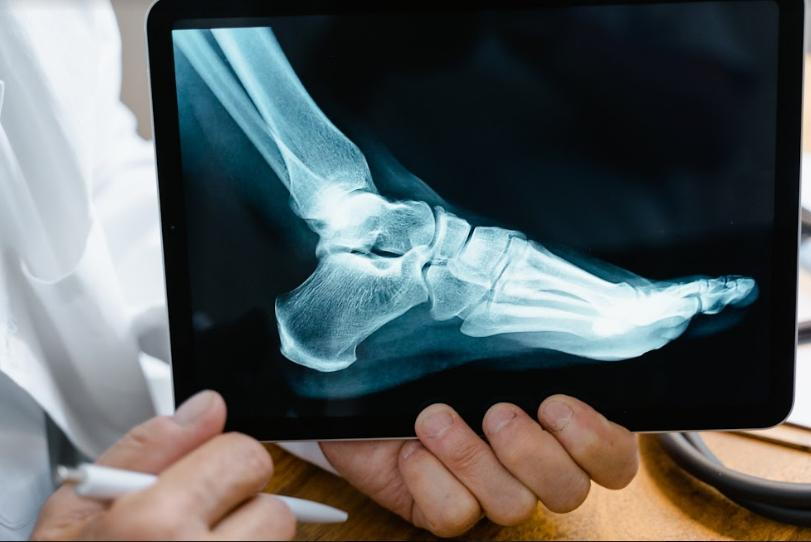How is a Bunionette Treated?
posted: Mar. 28, 2023.

How is a Bunionette Treated?
A bunionette, also known as Tailor’s bunion, is a painful bump or bony prominence towards the outside of the little or pinky toe. As the bump rubs on the inside of tight shoes, it can cause discomfort while walking.
If not treated soon, it can develop a callus and become painful as the toe shifts inwards and the bone connected to it (the fifth metatarsal) shifts outward.
Although some bunionettes can cause pain, most are painless and do not have symptoms. However, your podiatrist can offer treatment to fix the deformity and provide the foot with a more streamlined form.
Bunionette treatment is an option worth considering if you have a bunionette affecting your foot’s appearance.
Non-Surgical Bunionette Treatment
Your podiatrist may recommend non-surgical bunionette remedies before surgical intervention. If your bunionette is not prominent or painful, they may recommend that you wear shoes with a wide toe box and more padding inside.
In some cases, this simple remedy can help the foot realign, and over time, the bunionette might not be as pronounced. However, if this remedy does not work and the bunionette impacts your quality of life, your podiatrist might recommend bunionette surgery.
Bunionette Surgery
Bunionette surgery is an outpatient procedure that takes forty-five minutes to one hour. The foot surgeon will re-align the bony prominence on your small toe during the surgery to streamline the foot.
This can be done in minimal manner with local anaesthetic.
It’s important to note that the specific technique used will depend on the type of bunionette, the shape of the bones connected to it, and your wishes on how you want the foot to look.
Recovery
After surgery, you will need to reduce standing and walking on the operated foot for several weeks and keep it elevated as often at times to reduce swelling. With minimally invasive technique, mostly they do not need crutches.
To protect the foot, your foot specialist will prescribe a post-surgical shoe or boot that you will keep on for the duration of the initial healing period.
Although the healing process will vary based on type and level of deformity, in most cases, the foot will take up to twelve months for all swelling to go down and normal movement to resume.
Risks
The most significant risks associated with bunionette surgery are those generally associated with any surgery.
Some of these surgical risks might include infection, numbness, slow healing or more surgery if you have any more problems.
Another risk is the recurrence of the bunionette, especially if the person goes back to wearing tight shoes with a narrow or pointed front.
Long-term Outlook
If you don’t have a pronounced bunionette, you can live without any pain or other negative impact from it, especially if you wear wide, comfortable shoes. In some cases, hereditary factors might be at play, in which case, it might get worse even if you wear the right shoes.
If you have undergone bunionette surgery, you can avoid a recurrence of inflammation at the operated site by following your podiatrist’s recommendations on long-term foot care.